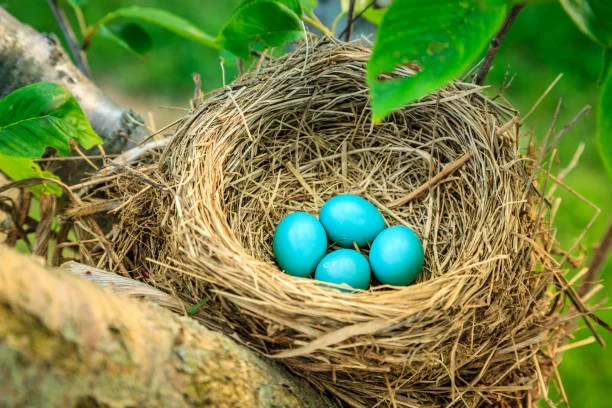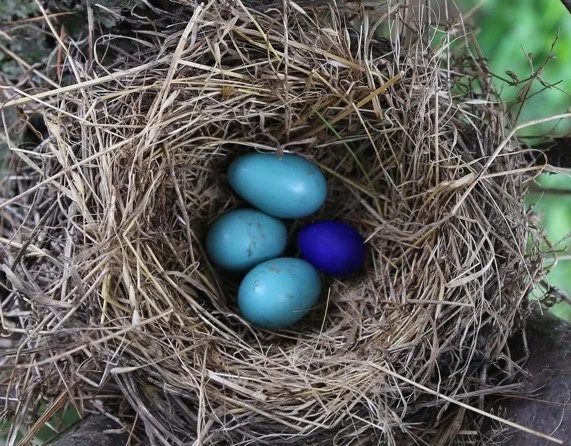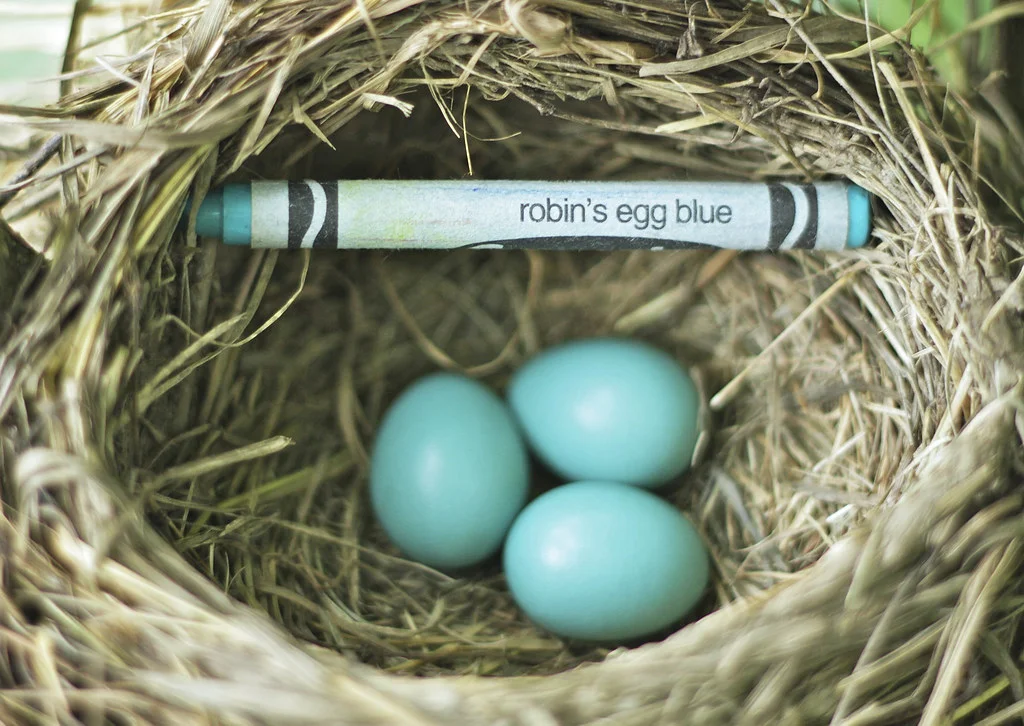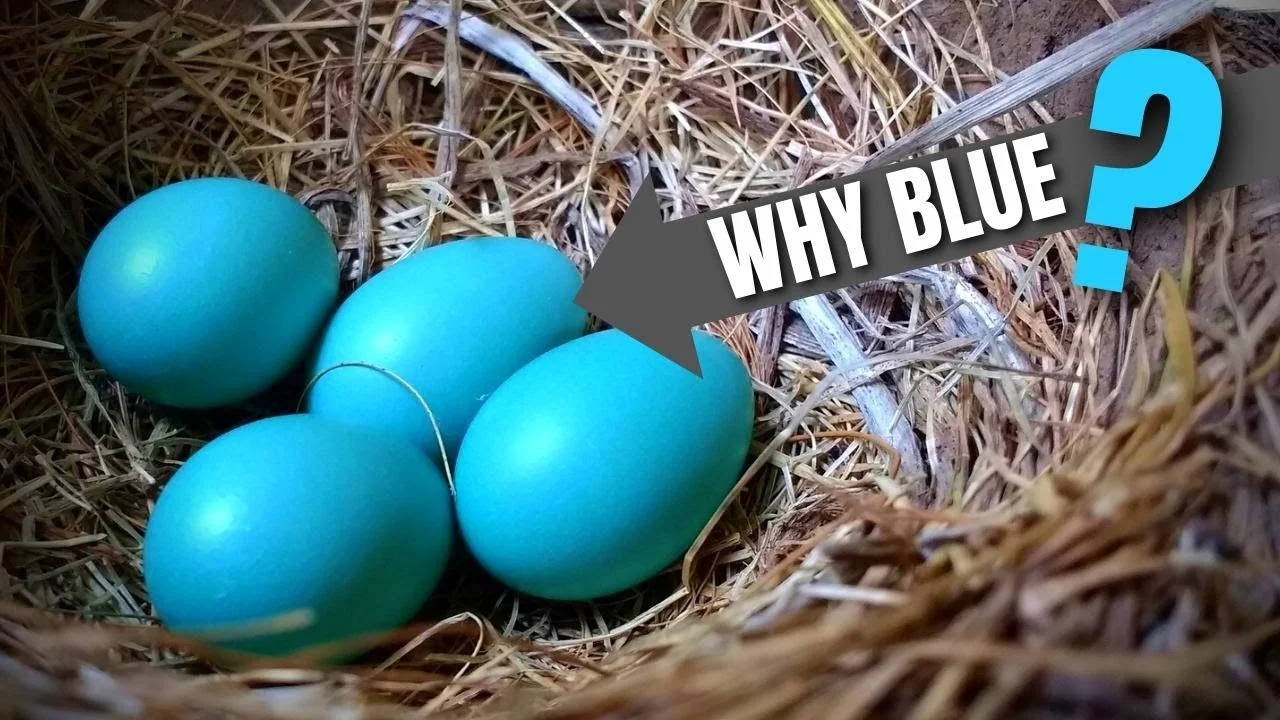The striking blue color of robin eggs, commonly known as “robins egg blue,” has long intrigued both casual birdwatchers and scientists alike. The color of eggshells can reveal fascinating details about a bird’s nesting habits and evolutionary adaptations. One of the most debated questions has been why some birds, including robins, have evolved to lay eggs in such vivid colors, especially considering the potential visibility to predators.
The Evolution of Eggshell Color
Renowned naturalist Charles Darwin himself pondered why bird eggs range in color from white to deep greenish-blue. There are several hypotheses to explain the evolutionary reasons for eggshell pigmentation, with two primary theories standing out: camouflage and protection from sunlight.
For birds that nest close to or on the ground, dull and mottled eggshell colors help them blend in with their environment, protecting them from predators. However, this doesn’t explain why certain species, like the American robin, have bright, unspeckled eggs—particularly when they are laid in open-cup nests, making them more visible to predators. This discrepancy suggests that factors other than camouflage must be driving the evolution of robins egg blue.

Sunlight Protection Hypothesis
The second widely accepted hypothesis is that bright eggshell colors, like robins egg blue, are a response to sunlight exposure. Birds that nest in areas exposed to moderate or intense sunlight may have evolved eggshell pigments to balance two opposing effects of sunlight: the transmission of light through the shell and the heating of the egg.
David Lahti, an assistant professor at the City University of New York, and Dan Ardia, an associate professor at Franklin & Marshall College, conducted research to explore how eggshell pigmentation might protect against sunlight. They studied various bird species, including the village weaverbird, which lays eggs in a range of colors from white to deep greenish-blue, to test how shell color affects light transmission and heat absorption.
Key Findings
Their research focused on several factors:
- UV Protection: Darker, more pigmented eggshells, such as robins egg blue, provide better protection against damaging ultraviolet (UV) radiation, which can penetrate lighter-colored eggshells and harm the developing embryo.
- Heat Absorption: Darker pigments in eggshells absorb more light, causing the egg to heat up faster. While some heat is beneficial, as it aids in incubation, too much can lead to overheating and speed up embryonic development, potentially leading to developmental problems.
In environments with moderate light exposure, such as the forests where American robins typically nest, eggs with robins egg blue coloration strike a balance. The pigmentation protects the egg from harmful UV radiation without causing the interior to overheat too quickly. This evolutionary adaptation allows robins to successfully incubate their eggs in moderately sunny environments.

How Environment Shapes Egg Color
The color of a bird’s egg can often predict the type of environment the species nests in. Birds that nest in open, sun-exposed areas, such as semi-arid or arid regions, tend to lay lighter-colored eggs, which are less likely to overheat. In contrast, birds like robins, which nest in forested areas with moderate sunlight, lay eggs with darker pigmentation to protect the embryos from UV damage.
This delicate balance explains why the robins egg blue color is so prominent. In moderate-light environments, this hue offers the perfect compromise between protection from UV radiation and managing internal heat.
What Color Is Robin’s Egg Blue?
Robins Egg Blue is a soft, pastel blue with subtle hints of green, reminiscent of a clear spring sky. This iconic shade is most famously associated with the eggs of the American robin, but it also evokes feelings of calm, renewal, and serenity. Its natural beauty and delicate hue make it a favorite in both nature and design.
Robin’s Egg Blue Color Combinations
When paired with other colors, robins egg blue offers endless possibilities for creating visually appealing and harmonious palettes. Here are some popular color combinations that work well with this soothing shade:
1. Robins Egg Blue and Coral (#1fcecb, #ff6f61)
This vibrant combination merges the calmness of robin’s egg blue with the lively warmth of coral. The result is a dynamic contrast that brings energy and excitement while still maintaining a serene, balanced feel. This palette is perfect for design projects where you want to create a lively, yet peaceful atmosphere.
2. Robin’s Egg Blue and Mint Green (#1fcecb, #98ff98)
Pairing robin’s egg blue with mint green results in a refreshing, nature-inspired color scheme. Both colors convey a sense of renewal and modern elegance, making this combination ideal for settings or projects that aim to evoke tranquility and a clean, minimalist vibe.
3. Robin’s Egg Blue and Lavender (#1fcecb, #e6e6fa)
The delicate pairing of robin’s egg blue and lavender creates a soft, harmonious palette perfect for evoking calm and sophistication. This serene blend is ideal for use in designs such as wedding invitations, spa branding, or any project where an air of elegance and relaxation is desired.
Using Robin’s Egg Blue in Your Projects
Choosing robins egg blue for your designs can instantly bring a sense of tranquility and freshness. Its gentle, calming tone makes it an excellent choice for creating peaceful and inviting atmospheres. Whether you’re decorating a nursery, designing a spa logo, or crafting wedding stationery, this soft blue hue adds a touch of elegance and renewal.
Robins egg blue is often found in projects that aim to soothe and relax the audience. Its versatility allows it to be used in a wide range of contexts, from home decor to website backgrounds. The color communicates serenity while maintaining a modern, stylish appeal, making it a popular choice for those looking to create a peaceful, yet sophisticated, aesthetic.

Conclusion
Robin’s Egg Blue is a timeless and versatile color that evokes feelings of serenity, freshness, and elegance. Its delicate blend of blue and green not only mimics the beauty of nature but also creates a calming atmosphere in any design or setting. Whether used in color combinations with vibrant hues like coral or soft tones like lavender, robin’s egg blue offers a perfect balance of tranquility and sophistication. Its widespread appeal makes it an excellent choice for a variety of projects, from home decor to branding, adding a peaceful and inviting touch wherever it’s applied.
FAQs About Robin’s Egg Blue
1. What is Robins Egg Blue?
Robin’s Egg Blue is a delicate pastel blue hue with faint green undertones. It is inspired by the color of eggs laid by American robins and evokes feelings of calmness, serenity, and freshness.
2. Where is Robins Egg Blue commonly used?
Robin’s Egg Blue is often used in home decor, branding, and design projects where a soothing, inviting atmosphere is desired. It’s popular in nursery decor, spa branding, wedding invitations, and serene website backgrounds.
3. What colors pair well with Robin’s Egg Blue?
Robin’s Egg Blue pairs beautifully with several colors, including coral for a vibrant contrast, mint green for a fresh and natural look, and lavender for a soft and sophisticated palette.
4. What emotions does Robin’s Egg Blue evoke?
The color is associated with feelings of calmness, tranquility, and renewal. Its soft, gentle hue makes it ideal for creating peaceful and relaxing environments.
5. Is Robin’s Egg Blue a versatile color?
Yes, Robin’s Egg Blue is highly versatile. Its delicate tone works well in various design settings, whether for creating a serene mood in interiors or conveying elegance and freshness in graphic design and branding.
For Getting More Information Thezvideo.




